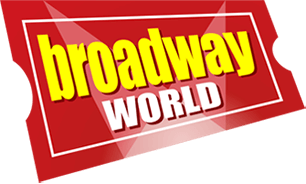TRASHOPOLIS- New Smithsonian Travel Series Premieres
By: Gabrielle Sierra Oct. 13, 2011
Beneath the streets of every major global city lies a dark and ugly secret. It's the hidden ingredient that has transformed primitive outposts into wondrous metropolitan areas, forcing mankind into radical urban and architectural directions, propelling advances in science and jump-starting revolutions. From the majestic skyscrapers of New York City to the dank catacombs of Paris, the stunning ruins of Rome, the mysterious sewers of London and the bustling markets of Cairo, a new series, TRASHOPOLIS, premiering Sunday, November 6 at 8 pm. ET/PT on Smithsonian Channel, uncovers the startling truth about how these cities rose and flourished because of their garbage.
The five-episode series is narrated by comic book writer and rock musician Jesse Blaze Snider, the son of Twisted Sister front-man Dee Snider.With the help of local experts, TRASHOPOLIS peels the layers off of rotten corpses, filthy ruins, and smelly garbage to reveal how the fight against rising tides of foul mud and human sewage gradually altered the shapes of the world's great cities from dark, cramped and unsanitary settlements into triumphs of grace, light and vibrant space.TRASHOPOLIS premiere episodes:TRASHOPOLIS: NEW YORK - Premieres Sunday, November 6 at 8 p.m. ET/PTWhen the Dutch bought Manhattan, the island was nothing but a swampy marsh. Trash, however, in the form of enormous mounds of giant oyster shells, helped build the New Amsterdam Seaport into the most profitable port in the New World. For many years garbage and recycling became big business-controlled by crooked politicians, and New York's most ruthless gangsters. Urban planner Robert Moses used trash to build New York City's expressways, bridges, and parks. Today, a group of activists known as "freegans," survive on nothing but trash thrown out by supermarkets, and an artist stuffs trash into small plastic boxes and sells them as art. A 50 million dollar project in Brooklyn used a new kind of trash to build a park on the shores of the East River.
Cairo's Zabaleen - the traditional garbage people - collect the city's trash by hand and haul it home on donkey drawn carts. Vast slums in the heart of the city are filled with mountains of stinking garbage, and in the alleys and on roof tops, Zabaleen women and children sort trash for recycling. 300,000 pigs raised by the Zabaleen eat what can't be re-sold, a practice that began in the days of King Tut. Following the Romans, a tribe of slave warriors known as the Mamelukes, defeated the Christian Crusaders. Under Islamic rule, Cairo flourished with strict laws regulating the disposal of trash and public sanitation. After Napoleon invaded a large section of Cairo was rebuilt - inspired by the architects and engineers who rescued Paris from its own sewage and trash. Today, Cairo awards sanitation contracts to multinational corporations, while Zablaeen take to the streets for a desperate fight to protect their livelihood.
When the walls of Paris's largest cemetery collapsed, decomposing bodies tumbled out - and six thousand corpses were moved into the tunnels of the catacombs. Terrified by ancient beliefs, some Parisians refused to bathe, leading to creation of the art of perfume to mask their body odors. Because of piles of garbage, the chief of police ordered the streets to be paved, and streetlights to be installed. A baron vowed to rid Paris of its filth by demolishing slums, creating the grand avenues of Paris, and building hundreds of miles of new sewers. A Parisian even invented the garbage can. A band of modern day activists refuses to throw anything away, turning trash into sculpture, and dead batteries and wine bottle corks into cash.TRASHOPOLIS: ROME - Premieres Sunday, November 27 at 8 p.m. ET/PT
Roman Emperors reflected the power and glory of the Empire in their monuments, temples, fountains and aqueducts. Their slaves built the greatest sewer system in the world. After the Visigoths destroyed the city, the Roman Catholic Church regained its glory by rebuilding the aqueducts, restoring the fountains, and passing new trash laws. A malevolent Pope banished the Jewish population to a ghetto within the city walls - and restricted their occupations to trash collecting. Mussolini lusted for immortality - and attempted to associate his rule with the ancient Emperors by championing vast public works, using slave labor. Modern day sanitation experts are excavating Rome's oldest landfill. Rome's ruins compete for space with traffic circles and luxury hotels, and a new kind of visual trash has begun to obscure its glory and beauty. TRASHOPOLIS: LONDON - Premieres Sunday, December 4 at 8 p.m. ET/PT
In the year 43 AD, Londinium was a rapidly expanding outpost of the Roman Empire situated on the banks of the Thames River. To support the docks of the new port there, Roman builders used trash. Today that trash reveals fascinating details of daily life in the ancient city. While London grew into a teeming metropolis, there was and continues to be a constant struggle with trash that has generated huge public works projects that have altered the shape of the city and affected the lives of every Londoner. An Englishman invented the world's first toilet. Trash helped Britain win two World Wars but also lead to the tragic deaths of thousands from overwhelming smog. Today, London continues to experiment with new ways of converting trash to energy, such as the construction of the world's largest trash incinerator. ABOUT SMITHSONIAN NETWORKS
Smithsonian Networks is a joint venture between Showtime Networks Inc. and the Smithsonian Institution, whose programs are largely inspired by the assets of the world's largest museum complex. Smithsonian Channel features award-winning original documentaries, series, and groundbreaking programs highlighting America's historical, cultural and scientific heritage. Smithsonian Channel brings the American experience home in high definition and Dolby Digital 5.1 and is available to customers of DirecTV, Comcast, Time Warner Cable, Charter Communications, Cablevision, Verizon, AT&T, and more. Learn more at www.smithsonianchannel.com.
Videos

